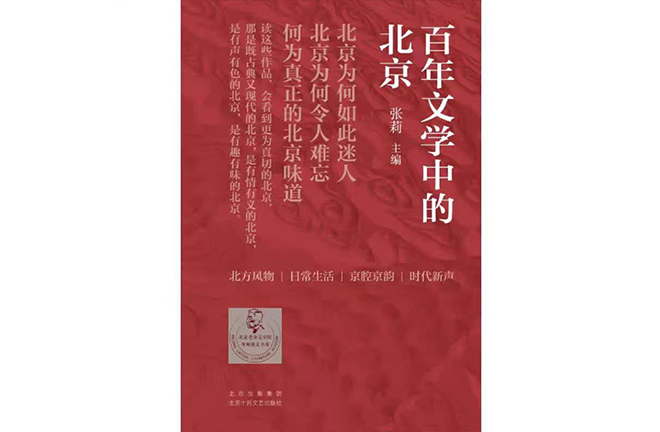Aesthetic approaches to urban literature in 21st century China

FILE PHOTO: A book series titled “Beijing in 100 Years of Literature” was publishsed in Oct. 2024.
Since the beginning of the 21st century, China’s urban literature has flourished. On one hand, a wealth of literary works reflecting the features and ethos of cities has emerged, providing vivid and lively artistic texts for the advancement of urban aesthetics. On the other hand, urban aesthetic theory has influenced urban literary creation, enabling a deeper exploration of cities and enhancing the quality of urban literature. Analyzing the aesthetic approaches to the development of China’s urban literature in the new century offers both a clearer grasp of its trajectory and a deeper understanding of the role of aesthetics on literary development.
Urban literature constructs urban aesthetics
With the rapid development of cities in the 21st century, urban literature has evolved in tandem with the development of urban aesthetics. Both urban literature and aesthetic research face similar issues: how to express urban aesthetic features, describe the aesthetic perceptions of urban populations, and interpret their aesthetic experiences in urban life.
Urban literature inspires readers to view cities from new aesthetic perspectives. It introduces the hidden or visible, micro or macro, present or future urban aesthetic scenes to the world through the vast expressive space of literary texts. By imagining virtual worlds, literature extends urban aesthetics into futuristic and unexplored realms, a characteristic particularly prominent in science fiction.
The rapid advancement of the internet in the new century has proceeded almost in parallel with urbanization, reshaping the lives of the Chinese people and transforming the literary landscape. The substantial, diverse reading demands of the vast number of internet natives who have grown up in cities have driven multidimensional exploration in online literature, considerably expanding the boundaries of urban aesthetics represented in these works.
Urban literature has brought together a group of creators and readers attuned to urban aesthetics. They validate the creative philosophy and reading experiences of literary works through real urban life, creating an aesthetic resonance based on personal experience. The aesthetic relationship between urban literary creators and their audience is not merely a “game” of author-reader decoding, but rather a process of joint aesthetic realization.
Urban literature vividly portrays urban scenes and urban life, forming an aesthetic field centered on cities. Several excellent urban literary works that prioritize the integration of literary writing with urban aesthetic properties have produced stylized expressions unique to cities. Literary criticism has also evolved alongside urban literature, with many critical discourses originating from aesthetics.
Fusion of urban literature and aesthetics
Urban literary writing and urban aesthetic development intersect at urban modernity. When literature both seeks the depth of tradition and aims to record modern urban life, it can draw upon aesthetic development for guidance. The accumulation of urban life experience lays the foundation, while aesthetic reflection is the key.
For urban literature to reach a certain intellectual depth, it must possess a complete aesthetic essence and demonstrate an independent aesthetic spirit. These attributes are essential for achieving breakthroughs in areas such as thematic exploration and characterization, as well as the showcasing of artistic styles. Whether we celebrate the flourishing of China’s urban literature in the new century or criticize its flaws, it is necessary to first consider what kind of aesthetic paradigm urban literature should aim to construct.
While aesthetics conceptualizes urban aesthetic imagery and tastes, urban literature transforms aesthetic notions into tangible urban images. The aesthetic examination of the urban landscape, urban life, and human relations necessitates not only in-depth and original theoretical exploration but also artistic practices revolving around urban themes. To ensure aesthetic quality, imagery creation in urban literature must serve the needs of storytelling, scene descriptions, and character development while avoiding simplistic labeling and imitation. The ideal effect of imagery creation is to reflect the connections within the imagery system while preserving the expressive space of each image.
Literary expression and criticism are inextricably linked with aesthetic theory. Urban aesthetics serves as a source of theoretical resources that can provide inspiration for urban literary creation, and an understanding of emerging aesthetic theories contributes to perceptive literary criticism.
Humans shape urban aesthetic features and styles based on their aesthetic aspirations, while cities reshape human aesthetic philosophy and tastes. This demonstrates the significance of aesthetic intervention in urban life and urban development practices—it can offer feedback on reality and exert social influence through literary writing and aesthetic development.
Huang Zhongshan is an associate research fellow from the Institute of Cultural Studies at Beijing Academy of Social Sciences.
Edited by WANG YOURAN

 PRINT
PRINT CLOSE
CLOSE